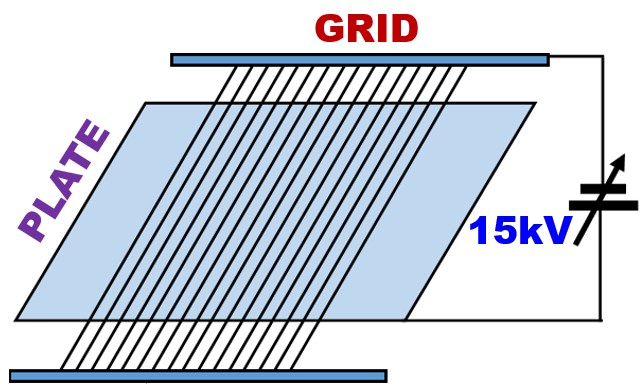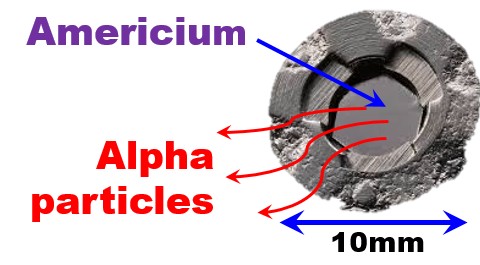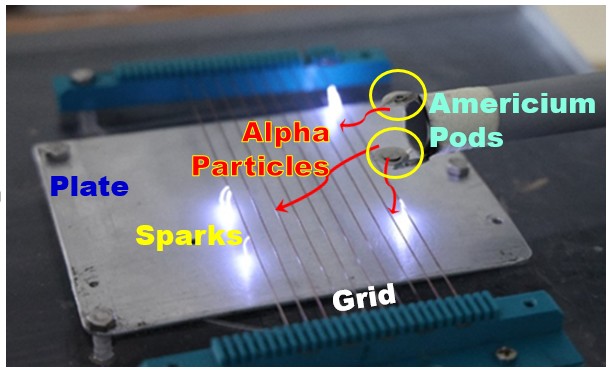Radiation induced discharge
Radiation Induced Discharge
This exhibit demonstrates plasma discharge between two electrodes initiated by radiation from a radioactive isotope.
The wire mesh and aluminium base plate form the two electrodes, across which a high voltage is applied. This high voltage is just below the minimum voltage required to form a discharge (spark) between the two electrodes. When an Americium pod (extracted from an old smoke detector) is brought close to the grid, one can see that sparks begin to form between the grid and plate.
The alpha-particles emitted by the Americium-241 (Am-241) ionizes the air between the grid and the plate, thereby creating a conductive path for the discharge to occur between them. Americium-241 is a man-made isotope with a half-life of 433 years. It decays emitting an a particle with an energy of approximately 5500 keV into excited states of Neptunium-237.
Alpha particles can be easily stopped using a sheet of paper. When we block the Americium pod with a paper, the sparks between the grid and plate stops.
|
 |  |
Schematic of the exhibit
| Close-up of the Americium pod
|
 | |
© IPR, 2017-18
Home Academic Visits | IPR Outreach | Comic Book | Exhibition Hall | Plasma Exhibition | People | Resource Materials | NSD-2025 | Social Outreach | Solar Telescope | Training Program | TokoToy | Vigyan Samagam | 2022 Events | 2023 Events | 2024 Events | 2025 Events | Upcoming Events | FAQ FAQ | Contact Contact | Ask A Question Ask A Question | Talk 2 Us Interact with a Plasma Scientist |
